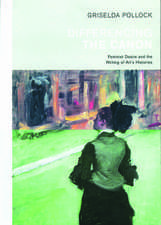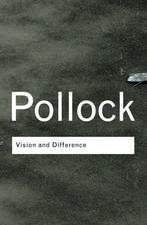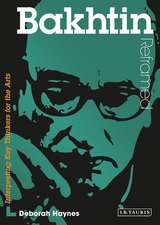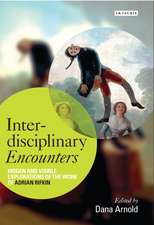Concentrationary Memories: Totalitarian Terror and Cultural Resistance: New Encounters: Arts, Cultures, Concepts
Editat de Griselda Pollock, Max Silvermanen Limba Engleză Hardback – 19 dec 2012
| Toate formatele și edițiile | Preț | Express |
|---|---|---|
| Paperback (1) | 187.10 lei 3-5 săpt. | +59.47 lei 4-10 zile |
| Bloomsbury Publishing – 8 sep 2021 | 187.10 lei 3-5 săpt. | +59.47 lei 4-10 zile |
| Hardback (1) | 779.59 lei 6-8 săpt. | |
| Bloomsbury Publishing – 19 dec 2012 | 779.59 lei 6-8 săpt. |
Preț: 779.59 lei
Preț vechi: 1116.32 lei
-30% Nou
Puncte Express: 1169
Preț estimativ în valută:
149.21€ • 153.77$ • 125.97£
149.21€ • 153.77$ • 125.97£
Carte tipărită la comandă
Livrare economică 03-17 martie
Preluare comenzi: 021 569.72.76
Specificații
ISBN-13: 9781780768960
ISBN-10: 1780768966
Pagini: 336
Ilustrații: 88 bw illus
Dimensiuni: 156 x 234 x 26 mm
Greutate: 0.84 kg
Editura: Bloomsbury Publishing
Colecția I.B.Tauris
Seria New Encounters: Arts, Cultures, Concepts
Locul publicării:London, United Kingdom
ISBN-10: 1780768966
Pagini: 336
Ilustrații: 88 bw illus
Dimensiuni: 156 x 234 x 26 mm
Greutate: 0.84 kg
Editura: Bloomsbury Publishing
Colecția I.B.Tauris
Seria New Encounters: Arts, Cultures, Concepts
Locul publicării:London, United Kingdom
Notă biografică
Griselda Pollock is Professor of Social and Critical Histories of Art and Director of the Centre for Cultural Analysis, Theory and History at the University of Leeds, UK. She is Editor, with Anthony Bryant, of "Digital and Other Virtualities: Renegotiating the Image" and of "Visual Politics of Psychoanalysis: Art and the Image in Post-Traumatic Cultures" (both I.B. Tauris) and is Series Editor of Tauris' "New Encounters" Series. Max Silverman is Professor of Modern French Studies at the University of Leeds. His recent publications include "Palimpsestic Memory: the Holocaust and Colonialism in French and Francophone Fiction and Film" (Berghahn, 2013). Griselda Pollock and Max Silverman are joint authors of "Concentrationary Cinema: Aesthetics as Political Resistance in Alain Resnais's 'Night and Fog', " which won the Kraszna-Krausz Award for Best Book on the Moving Image, 2011.
Cuprins
Concentrationary Memories Series PrefaceGriselda Pollock & Max SilvermanTable of ContentsList of IllustrationsAcknowledgements IntroductionThe Politics of Memory: From Concentrationary Memory to Concentrationary Memories Griselda Pollock & Max Silverman: Part 1: Theorising the Political Space and BeyondChapter 1 The Memory of Politics: Hannah Arendt, Carl Schmitt and the Possibility of Encounter John Wolfe AckermanPart 2: Mediations of MemoryChapter 2 Migration and Motif: the (Parapractic) Memories of an Image Thomas ElsaesserChapter 3 The Two Stages of the Eichmann Trial Sylvie Lindeperg & Annette WieviorkaChapter 4 Brushing the Film Against the Grain: Locating Jean Cayrol's Lazarean Figure in Alain Resnais's Muriel ou le temps d'un retour Matthew JohnPart 3: Camp VisionsChapter 5 Symbol Re-formation: Concentrationary Memory in Charlotte Delbo's Auschwitz and AfterNicholas ChareChapter 6 A New Visual Structure for the Unthinkable: The Surrealist Aesthetic and the Concentrationary Sublime in Lee Miller's Photographs of Buchenwald and DachauIsabelle de le CourtChapter 7 Muselmann: a distilled image of the Lager?Glenn SujoChapter 8Nameless before the Concentrationary Void: Charlotte Salomon's Leben? oder Theater? 1941-42 after Gurs Griselda PollockPart 4: Beyond the LimitsChapter 9 Animated Memory: Ari Folman's Waltz with Bashir Claire LaunchburyChapter 10 Isn't this where.? Projections on Pink Floyd The Wall: Tracing the Concentrationary Image Benjamin Hannavy CousenChapter 11 Memory Work in Argentina 1976-2006Laura Malosetti CostaNotes on ContributorsBibliographyIndex
Recenzii
Concentrationary Memories rests on a provocative, carefully theorized consideration of the nature of the 'concentrationary' universe, extending and reframing terms and ideas introduced by Hannah Arendt, on the one hand, and lesser known but significant figures in the French context such as David Rousset, Robert Antelme and Jean Cayrol. As its editors note, the first word of their title is unfamiliar in English, and this is perhaps a sign of the need for renewed and close attention to the phenomenon named by the French writer Rousset in 1946. The volume answers this need with care and a justly high level of critical vigilance. Without deflecting the importance attached to the term holocaust and to the issues and concerns of the racial genocides of the twentieth-century, the volume shifts attention towards the politics of deportation and internment, and pursues vital questions about the adequacy and nature of aesthetic responses, questions which bear upon the nature and concept of representation. A crucial emphasis of the volume is on the 'permanent presence' of the concentrationary, since its inception; the volume thus includes powerful and essential analyses of the phenomenon across examples in literature, film and photography since the liberation of the camps, and in varying global contexts. The 11 essays in the volume are supported by an extensive introduction by the editors, a contribution in its own right to ongoing debates about politics and representation, and the politics of representation. Given this focus, the meticulous attention to the presentation of the substantial number of images which feature in the volume is unsurprising, and deserves special recognition. This is a unique project, insofar as it breaks new ground in the establishment of a new object of enquiry and research, and goes some way into the exploration of this territory. The volume makes a substantial contribution to research on the legacies of the political evils of the last century and will be essential reading for anyone concerned with it and by it. The book makes a clear case that this includes all of us.





























